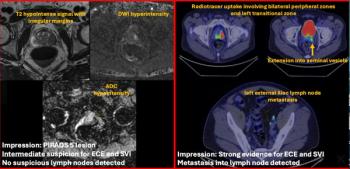
For Smokers, Low-Dose CT Benefit Outweighs Harm
Low-dose CT screening for lung cancer does present risks of false-positives and over-diagnosis, but for heavy or ex-smokers, it is worth it.
Low-dose CT screening for lung cancer does expose patients to radiation, but it is worth it for heavy and ex-smokers. Getting screened could mean they live longer.
According to a report released recently by the Institute for Quality and Efficiency in Health Care (IQWiG), even with the risk of false positives or over-diagnosis, patients who have a history of smoking could see a drop in mortality.
Currently, lung cancer is largely diagnosed at a late stage, and only approximately one-fifth to one-sixth of patients who develop the disease are still alive five years post-prognosis. These patient outcomes underscore the need for more extensive screening efforts, the report said.
While the results of eight randomized controlled trials involving more than 90,000 people did not show that low-dose CT screening has any impact on all-cause mortality, the findings did show these scans can benefit heavy or ex-smokers. Based on the study analyses, within a 10-year time frame, the screening can prevent five of every 1,000 lung cancer deaths.
Related Content:
“In its final report, IQWiG, therefore, concludes that there is a hint of benefit of low-dose CT for lung cancer screening versus no screening,” the Institute said in a press statement.
Even when faced with the risk of over-diagnosis and complications associated with false-positives, and, the group said, heavy and ex-smoker still experienced benefit from low-dose CT screening. Between one to 15 people could end up having unnecessary surgery due to a false-positive result, and between zero and 22 people could experience over-diagnosis.
Optimizing Screening Efforts
Given that the benefit-harm ratio does exist with low-dose cancer screening, the Institute recommended that screening efforts be designed, using a precise definition for high-risk populations. Specifically, the group recommended examining both smoking behavior and remaining life expectancy based on other health factors.
Efforts to optimize low-dose CT screening are ongoing, they said, and they should be supported in practice by specific quality assurance measures, such as diagnostic algorithms, types of devices, and follow-up.
For more coverage based on industry expert insights and research, subscribe to the Diagnostic Imaging e-Newsletter
Newsletter
Stay at the forefront of radiology with the Diagnostic Imaging newsletter, delivering the latest news, clinical insights, and imaging advancements for today’s radiologists.




























